Red musky hibiscus, methods of propagation, preparation of flowers for hibiscus tea
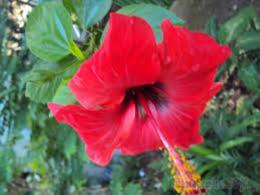
In appearance musky hibiscus it is easy to determine that it belongs to shrubs. The plant is a perennial and attracts attention with its decorative effect, the rich color of the leaves and the brightness of large, exquisitely shaped flowers.
It is these flowers that are valuable raw materials - the famous hibiscus tea is made from them, used for the production of medical and cosmetic products, and exquisite culinary dishes.
Content:
- Description of the plant hibiscus swamp
- Hibiscus musk hibiscus red, features of its preparation and application
- Growing musky hibiscus from seeds
- Propagation by cuttings and dividing the bush
- Musky herbaceous hibiscus - care recommendations
Description of the plant hibiscus swamp
Hibiscus moscheutos, or swamp hibiscus, also known as musk, belongs to the family Malvaceae, the number of representatives of this genus, according to some sources, reaches three hundred.
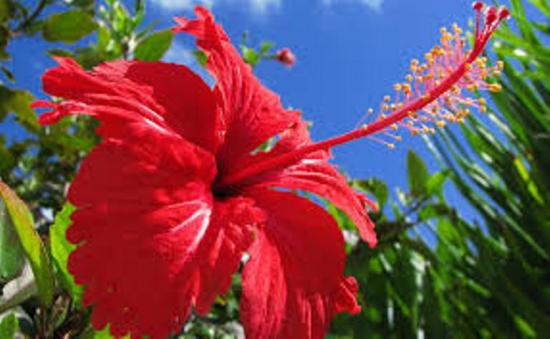
Hibiscus, like a real shrub, has several stems with woody bark. The plant does not have any special requirements for care or location; it can be grown quite successfully in the garden.
But to obtain long-term flowering you will still need:
- maintain soil moisture in the tree trunk circle
- produce periodic feeding
- provide good lighting
Each of the plant’s buds blooms for only a day, but the formation of the buds itself can last from May to October. On an adult plant, a dozen flowers often open in one day.
Their shape is very elegant, and their diameter can reach 15 cm. Flower has the formula: Ch(5)L5T(10)P. Flowers can be double or simple. And their color options amaze the imagination with their diversity: from delicate cream to rich scarlet and purple-violet.
Musk hibiscus grows wild in the south-east of Asia, in the tropical parts of America and the African continent.
And the Thais, Chinese, Egyptians, and Mexicans grow hibiscus on plantations in order to obtain valuable raw materials for making tea.
Hibiscus musk hibiscus red, features of its preparation and application
Not only fresh and dried flowers, but also roots are harvested as raw materials. When picking flowers, they use garden shears, or simply tear them off with their hands. Harvesting is done once every ten days. When cleaning, remove seed pods, so that only the petals remain.
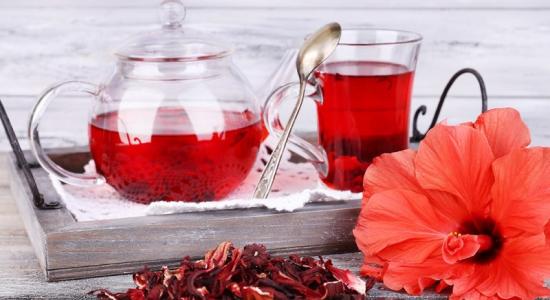
For the preparation of medicines and cosmetics, six-day ovaries are collected; this is the period of the highest saturation of the petals with valuable substances.
They contain the following elements:
- organic acids
- vitamins
- minerals
- phytosterols and flavonoids
- polysaccharides and pectin
Drying petals for hibiscus tea is done in ventilated areas, avoiding exposure to sunlight. Paper bags are used to store dry product.
Hibiscus ovaries are also stored frozen, canned and boiled.
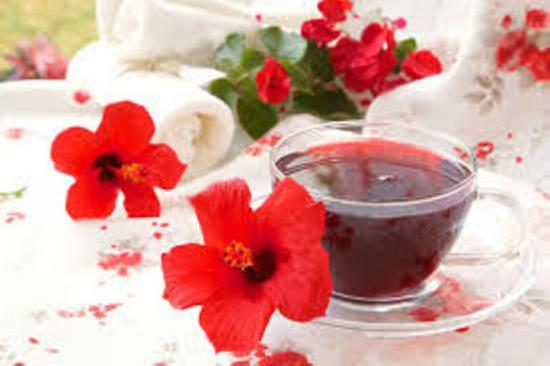
Growing musky hibiscus from seeds
Grow a new teahouse rose It’s not difficult to grow from seeds. First you need to collect these same seeds. They are found in pods formed after flowering has completed. When the pods reach ripeness, they turn brown.
Before harvesting seeds, it is recommended to line the ground around the plant with a piece of cloth or paper bags - otherwise seed losses may be large. Collecting seeds that have fallen on the canvas from cracked pods is not at all difficult.
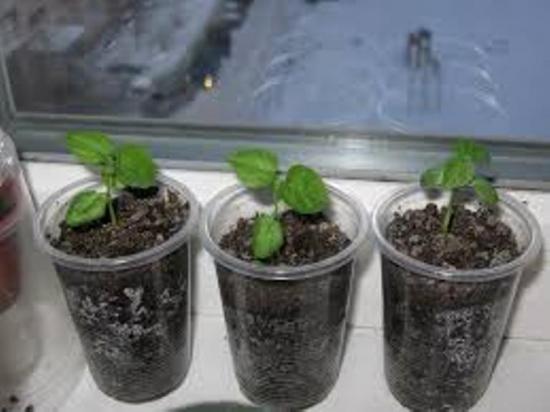
If seeds are purchased in a store, you should study the information about the variety you are purchasing.
Before starting sowing, it is recommended to check the seeds for germination. To do this, wrap several seeds in a piece of damp cloth, pack them in plastic and keep them in room conditions for a week. During this time, the seeds should swell and root formation may begin. Such seeds are quite suitable for sowing.
Prepare a container for sowing and fill it soil. The distance between the seeds should be 0.5 cm. The crops should be lightly sprinkled with soil. Next, you need to thoroughly moisten the substrate and place the container in a warm, well-lit place.
Shoots can be expected in a couple of weeks.
This method of reproduction has its pros and cons:
- seedlings from seeds are strong, viable and resistant to weather conditions
- but there is no guarantee that the varietal qualities of the plant will be preserved
Propagation by cuttings and dividing the bush
It is much easier to propagate a Chinese rose by cuttings. A piece of branch is suitable for planting; it is best to take it from the top of the bush.
Before planting, you should remove the lower leaves; you can plant them directly in soil of a suitable composition.After filling the container with substrate, water it well, and make a hole in the center of the pot into which the cutting is planted. A growth accelerator can be added to the soil.
To create more comfortable conditions for a new plant, you can build a greenhouse around it from a plastic bag. The location of the seedling should be well lit, but direct sunlight should not fall on the leaves.
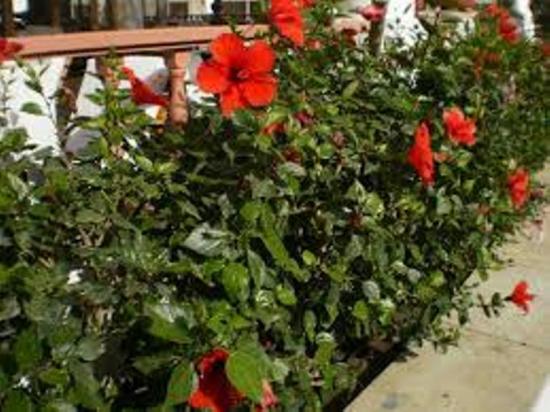
It will take about three weeks for roots to appear.
Only very overgrown bushes can be divided. The best time to do this kind of work is in the spring. In this case, the bush is dug out completely and divided into two or several parts, depending on the number of buds or stems. You can separate the roots with your hands; you can use pruners.
This method allows you to preserve the purity of the variety, and therefore its quality characteristics.
Musk hibiscus - care recommendations
Caring for the plant will not cause difficulties if you do not ignore certain rules:
- The flowerpot can be placed in partial shade, provided that the flower is kept in a room illuminated by the sun for 6 hours a day
- the soil may be slightly acidic (up to pH 6.5), consist half of peat, a large percentage of organic matter in the soil is welcome
- it is necessary to arrange high-quality drainage, stagnation of water will cause rotting of the roots
- we should not forget that hibiscus - a moisture-loving plant, i.e. watering should be moderate but systematic
- The plant signals a lack of moisture with wilted leaves.
- You can use settled tap water for irrigation
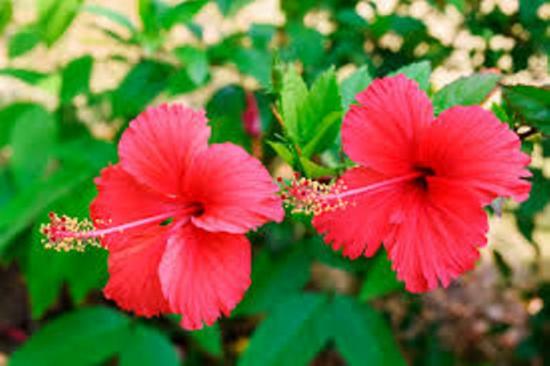
It is recommended to carry out pruning periodically; in the spring this will stimulate the rejuvenation of the plant.If hibiscus is grown outdoors, then autumn pruning should be discarded.
Clean garden tools should be used for pruning; dead and diseased branches should be removed.
Care instructions hibiscus musky herbaceous, in particular - pruning, are somewhat different:
- It is recommended to trim all branches before wintering
- the plant itself will require shelter during winter frosts
- in the spring, to accelerate the growth of new shoots, you can build a greenhouse over the bush
Feeding the plant consists of adding a large amount ofAliya, limited amount of nitrogen. It is better to avoid adding phosphorus-containing substances.
In winter, fertilizing is not carried out.
You can learn more about red hibiscus tea and its beneficial properties by watching the video:

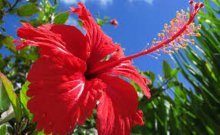
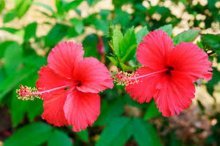

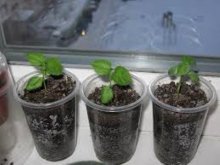
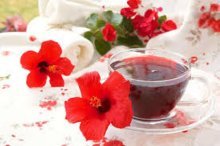
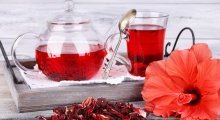
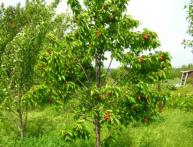
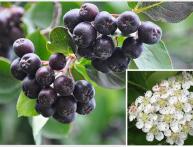
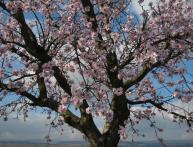
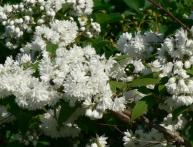
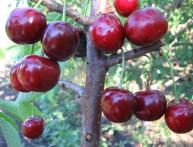
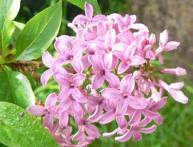

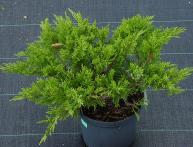
Comments
We have red musky hibiscus and in our family we really love tea with this flower. But of course we don’t drink it often; it’s still not for daily use, like black/green tea.
Wow, what a valuable plant. I had no idea that hibiscus was a hibiscus, but I really appreciated it for its beauty and long flowering. A rare plant with such great advantages.